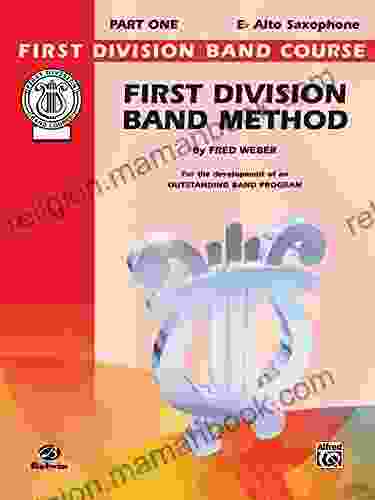Nurturing Musical Excellence: A Comprehensive Guide to Developing an Outstanding First Division Band Program

In the realm of musical education, the pursuit of excellence is an unyielding endeavor. For band programs, achieving a First Division rating is a coveted benchmark that signifies an ensemble's exceptional musicianship and technical proficiency. Developing such a program requires a multifaceted approach that encompasses every aspect of the musical experience, from recruitment and instruction to rehearsal techniques and performance preparation.
Laying the Foundation: Recruitment and Selection
The foundation of an outstanding band program rests upon a pool of talented musicians. Therefore, it is crucial to establish a proactive recruitment strategy that identifies and attracts potential students. This can be achieved through outreach programs in elementary and middle schools, where students are introduced to the instruments and the joy of music-making. By showcasing the accomplishments of the band program and fostering a sense of community, educators can inspire students to join and become part of something extraordinary.
4.2 out of 5
| Language | : | English |
| File size | : | 28706 KB |
| Screen Reader | : | Supported |
| Print length | : | 28 pages |
| Mass Market Paperback | : | 352 pages |
| Lexile measure | : | NP |
| Item Weight | : | 6.4 ounces |
| Dimensions | : | 4.15 x 0.9 x 6.81 inches |
Once students express interest, it is important to conduct auditions to ensure they possess the necessary aptitude and commitment. Auditions should assess not only technical skills but also musicality, rhythm, and overall potential. By carefully selecting students, directors can create a balanced ensemble with a broad range of abilities, fostering a supportive and cooperative environment.
Instructional Excellence: Nurturing Musical Growth
With a talented ensemble in place, the focus shifts to providing exceptional instruction. This involves creating a comprehensive curriculum that addresses all aspects of musicianship, from basic technique to advanced performance practices. Lessons should be tailored to the individual needs of each student, ensuring they receive the support and guidance they require to reach their full potential.
In addition to individual instruction, sectional rehearsals play a vital role in developing ensemble cohesion. By dividing the band into smaller groups based on instrumentation, directors can focus on specific technical and musical challenges. Sectional rehearsals provide an opportunity for students to refine their intonation, balance, and phrasing, ultimately contributing to the overall quality of the ensemble.
Rehearsal Techniques: Fostering Discipline and Expression
The rehearsal process is the crucible in which musical excellence is forged. It is here that students develop the discipline, precision, and expressive qualities that define a First Division band. Directors must approach rehearsals with a clear plan, establishing routines and expectations that create a structured and focused learning environment.
Effective rehearsal techniques include the use of conducting gestures, verbal cues, and modeling. By using clear and consistent gestures, directors can convey musical intent and ensure that all members of the ensemble are playing together. Verbal cues provide additional guidance, helping students understand phrasing, dynamics, and articulation. Modeling, where the director demonstrates the desired musical effect, allows students to hear and visualize what they are striving for.
Creating a positive and supportive rehearsal environment is essential for fostering musical growth. Directors should provide constructive feedback, encouraging students to take risks and experiment with their playing. By fostering a culture of respect and encouragement, directors can create a space where students feel comfortable sharing ideas and pushing themselves to achieve their best.
Performance Preparation: The Culmination of Effort
Performance preparation is the final and perhaps most critical stage in the development of an outstanding band program. It is here that students showcase their hard work and demonstrate their musical maturity. Directors must prepare their ensemble thoroughly, ensuring they have the confidence and technical proficiency to perform at their peak.
This involves setting realistic performance goals, establishing a rehearsal schedule that allows for ample preparation time, and providing students with opportunities for mock performances. Mock performances can be invaluable for identifying areas that need improvement and building the ensemble's confidence in their ability to deliver a polished and professional performance.
On the day of the performance, directors should provide their students with a clear and concise warm-up routine. This warm-up should include physical exercises to prepare the body for playing and mental exercises to focus the mind and reduce anxiety. By creating a calm and supportive environment, directors can help their students perform to the best of their abilities and deliver a memorable performance.
Assessment and Evaluation: Measuring Progress and Setting Goals
Assessment and evaluation are essential components of any educational program. In the context of a band program, assessment serves multiple purposes, including providing feedback to students, tracking their progress, and setting goals for future development. Directors should use a variety of assessment methods, such as individual evaluations, sectional assessments, and full ensemble evaluations.
Individual evaluations provide students with specific feedback on their playing, allowing them to identify areas for improvement. Sectional assessments allow directors to gauge the progress of each section and identify any weaknesses that need to be addressed. Full ensemble evaluations provide an overall picture of the band's performance and help directors determine the ensemble's strengths and weaknesses.
By regularly assessing and evaluating their students, directors can make informed decisions about the direction of the program. This information can be used to set realistic goals, develop individualized practice plans, and tailor instruction to meet the specific needs of the ensemble.
: A Journey of Excellence
Developing an outstanding First Division band program is a challenging but incredibly rewarding endeavor. It requires a commitment to excellence, a comprehensive approach to instruction, and a dedication to nurturing the musical growth of each student. By following the principles outlined in this article, directors can create a program that inspires students, transforms lives, and brings joy to audiences everywhere.
The journey to excellence is never-ending, as there is always room for improvement and growth. By fostering a love of music, instilling discipline, and providing opportunities for students to showcase their talents, directors can cultivate an ensemble that consistently delivers exceptional performances and sets a high standard for musical excellence.
4.2 out of 5
| Language | : | English |
| File size | : | 28706 KB |
| Screen Reader | : | Supported |
| Print length | : | 28 pages |
| Mass Market Paperback | : | 352 pages |
| Lexile measure | : | NP |
| Item Weight | : | 6.4 ounces |
| Dimensions | : | 4.15 x 0.9 x 6.81 inches |
Do you want to contribute by writing guest posts on this blog?
Please contact us and send us a resume of previous articles that you have written.
 Top Book
Top Book Novel
Novel Fiction
Fiction Nonfiction
Nonfiction Literature
Literature Paperback
Paperback Hardcover
Hardcover E-book
E-book Audiobook
Audiobook Bestseller
Bestseller Classic
Classic Mystery
Mystery Thriller
Thriller Romance
Romance Fantasy
Fantasy Science Fiction
Science Fiction Biography
Biography Memoir
Memoir Autobiography
Autobiography Poetry
Poetry Drama
Drama Historical Fiction
Historical Fiction Self-help
Self-help Young Adult
Young Adult Childrens Books
Childrens Books Graphic Novel
Graphic Novel Anthology
Anthology Series
Series Encyclopedia
Encyclopedia Reference
Reference Guidebook
Guidebook Textbook
Textbook Workbook
Workbook Journal
Journal Diary
Diary Manuscript
Manuscript Folio
Folio Pulp Fiction
Pulp Fiction Short Stories
Short Stories Fairy Tales
Fairy Tales Fables
Fables Mythology
Mythology Philosophy
Philosophy Religion
Religion Spirituality
Spirituality Essays
Essays Critique
Critique Commentary
Commentary Glossary
Glossary Bibliography
Bibliography Index
Index Table of Contents
Table of Contents Preface
Preface Introduction
Introduction Foreword
Foreword Afterword
Afterword Appendices
Appendices Annotations
Annotations Footnotes
Footnotes Epilogue
Epilogue Prologue
Prologue Sahjan Johny
Sahjan Johny Patricia Loofbourrow
Patricia Loofbourrow Thomas Meyer Zur Capellen
Thomas Meyer Zur Capellen Shari L Tapscott
Shari L Tapscott Diana Preston
Diana Preston H B Barstrum
H B Barstrum Rand Paul
Rand Paul Alcaeus
Alcaeus Dr Faith G Harper
Dr Faith G Harper Elisient Maeve Vernon
Elisient Maeve Vernon Mary Campisi
Mary Campisi Crystal Harrell
Crystal Harrell Adrienne Brodeur
Adrienne Brodeur Cynthia J Cyrus
Cynthia J Cyrus B D Mccullough
B D Mccullough Kathleen G Nadeau
Kathleen G Nadeau Alexa Ward
Alexa Ward Quentin Tarantino
Quentin Tarantino David Bomber
David Bomber Amy Chua
Amy Chua
Light bulbAdvertise smarter! Our strategic ad space ensures maximum exposure. Reserve your spot today!

 Felipe BlairOvercoming Their Hurtful Legacy And Reclaiming Your Life: A Long Journey of...
Felipe BlairOvercoming Their Hurtful Legacy And Reclaiming Your Life: A Long Journey of... Marc FosterFollow ·6.2k
Marc FosterFollow ·6.2k Virginia WoolfFollow ·17.1k
Virginia WoolfFollow ·17.1k Dion ReedFollow ·19.8k
Dion ReedFollow ·19.8k Wayne CarterFollow ·19.4k
Wayne CarterFollow ·19.4k Aaron BrooksFollow ·13.3k
Aaron BrooksFollow ·13.3k Seth HayesFollow ·5.8k
Seth HayesFollow ·5.8k Alfred RossFollow ·11.9k
Alfred RossFollow ·11.9k George R.R. MartinFollow ·6.8k
George R.R. MartinFollow ·6.8k

 David Peterson
David PetersonUnveiling Eleven of the Wheel of Time: A Journey Through...
In the vast and intricate...

 Curtis Stewart
Curtis StewartEbony Jay Rice: A Rising Star in the Entertainment...
Ebony Jay Rice is a force to be reckoned...

 Matt Reed
Matt ReedNavigating Mental Health with Science: Overcoming...
Mental health is an integral part of...

 Guillermo Blair
Guillermo BlairFormer Magistrate's Poetic Reflections on Love and...
In the hallowed halls...

 Corey Green
Corey GreenOf the Dead: William Burroughs' Post-Beat Masterpiece
William S. Burroughs' Of the...
4.2 out of 5
| Language | : | English |
| File size | : | 28706 KB |
| Screen Reader | : | Supported |
| Print length | : | 28 pages |
| Mass Market Paperback | : | 352 pages |
| Lexile measure | : | NP |
| Item Weight | : | 6.4 ounces |
| Dimensions | : | 4.15 x 0.9 x 6.81 inches |










